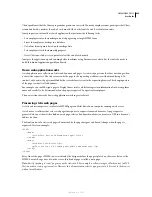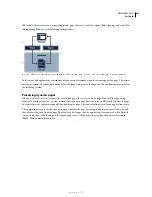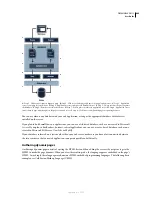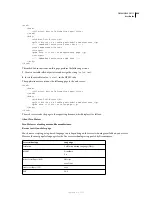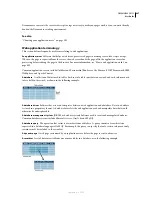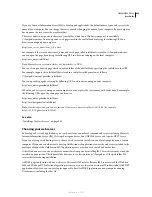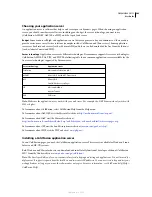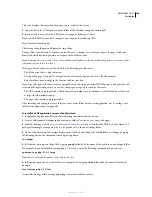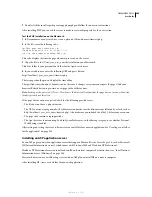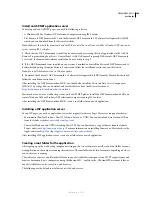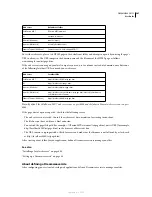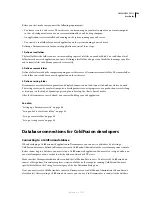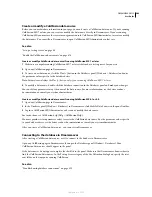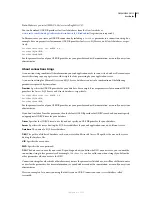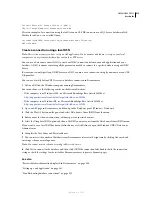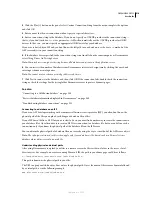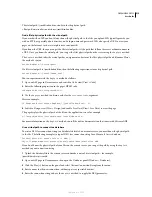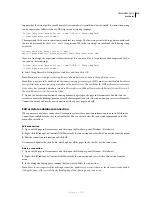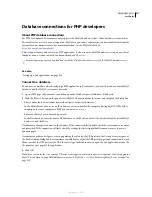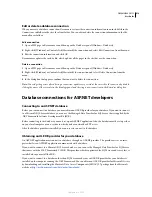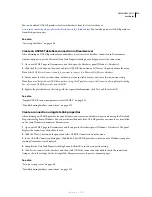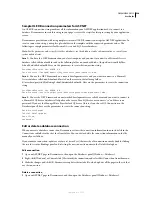
DREAMWEAVER CS3
User Guide
505
7
Double-click the installer package entropy-php.mpkg and follow the onscreen instructions.
After installing PHP, you can test the server to make sure it works properly. See the next section.
Test the PHP installation on the Macintosh
1
In Dreamweaver or any text editor, create a plain text file and name it timetest.php.
2
In the file, enter the following code:
<p>This page was created at <b>
<?php echo date("h:i:s a", time()); ?>
</b> on the computer running PHP.</p>
This code displays the time the page when was processed on the server.
3
Copy the file to the /Users/
your_user_name
/Sites folder on your Macintosh.
This Sites folder is your personal root folder for the Apache web server.
4
In your web browser, enter the following URL and press Return:
http://localhost/~
your_user_name
/timetest.php
The test page should open and display the time of day.
The specified time is known as dynamic content because it changes every time you request the page. Click your
browser’s Refresh button to generate a new page with a different time.
Note:
Looking at the source code (View > View Source In Safari) will confirm that the page does not use any client-side
JavaScript to achieve this effect.
If the page doesn’t work as expected, check for the following possible errors:
•
The file does not have a .php extension.
•
The URL contains a typing mistake. Check for errors and make sure the filename is not followed by a slash, such as
http://localhost/~
your_user_name
/timetest.php/. Also make sure you included the tilde (~) before your user name.
•
The page code contains a typing mistake.
•
The Apache server is not running. Look in System Preferences, in the Sharing category, to see whether Personal
Web Sharing is enabled.
After testing and testing the server software, create a root folder for your web application. See “Creating a root folder
for the application” on page 506.
Installing an ASP application server
To run ASP pages, you need an application server that supports Microsoft Active Server Pages 2.0., such as Microsoft
IIS (Internet Information Services), which comes with Windows 2000 and Windows XP Professional.
Windows XP Professional users can install and run IIS on their local computer. For instructions, see “Install Internet
Information Server (Windows)” on page 500.
Macintosh users can use a web hosting service with an ASP plan or install IIS on a remote computer.
After installing IIS, create a root folder for your web application.
September 4, 2007


